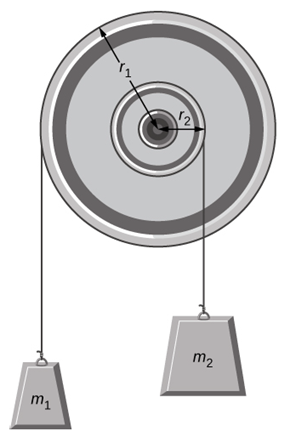- #1
cbarker1
Gold Member
MHB
- 346
- 23
Dear Every Body,
I need some help. First question: Is the tension of the string is the same or different?
A pulley of moment of inertia 2.7 kg [FONT="]· m2 is mounted on a wall as shown in the following figure. Light strings are wrapped around two circumferences of the pulley and weights are attached. Assume the following data: r1 = 47 cm,
r2 = 20 cm,
m1 = 1.0 kg,
and m2 = 1.9 kg.
[/FONT]
 (a)
(a)
What is the angular acceleration in rad/$s^2$ of the pulley?
(b)
What is the linear acceleration (in m/s2) of the weights?
a1
a2
I need some help. First question: Is the tension of the string is the same or different?
A pulley of moment of inertia 2.7 kg [FONT="]· m2 is mounted on a wall as shown in the following figure. Light strings are wrapped around two circumferences of the pulley and weights are attached. Assume the following data: r1 = 47 cm,
r2 = 20 cm,
m1 = 1.0 kg,
and m2 = 1.9 kg.
[/FONT]

What is the angular acceleration in rad/$s^2$ of the pulley?
(b)
What is the linear acceleration (in m/s2) of the weights?
a1
a2